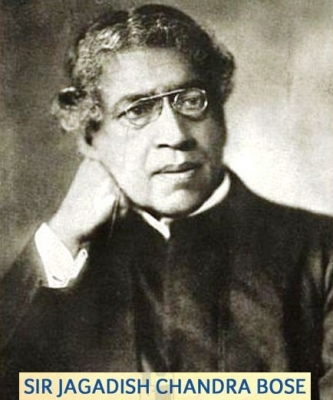In the 19th century when India was excelling in various fields like fine arts, literature and philosophy, her contribution in the field of science was almost negligible. It was Sir Jagadish Chandra Bose, who with his inventions in the second-half of the 19th century, not only made a name for himself but also put India on the science map of the world.

Bose was born on November 30, 1858, in a village of Bengal. After studying physics at the Calcutta University he went to England for further studies. He graduated from Cambridge University in 1884, and after coming back to India he became a professor of physical sciences at Presidency College, Calcutta from 1885 to 1915. He was a doyen of Indian science; a pioneer in the field of physical and plant physiological researches.
He had a deep interest in animal and plant life right from his boyhood. After becoming the professor, he got an opportunity to work in his cherished field. He was the first to realize that both animals and plants have a great deal in common, but he did not have any instrument to prove it. To begin with, he designed and built a very sensitive machine for the detection of minute responses of living organisms to external stimuli. This instrument was called crescograph. It magnified the movement of plant tissues to ten thousand times of their original size and could record the reaction of plants to manures, noise and other stimuli. He is also credited with inventing a wireless transmission system that went unrecognized, much before Marconi.
Bose was elected a fellow of the Royal Society in 1920. He was the author of two world famous books: Response in Living and Non-living (1902); and The Nervous Mechanism of Plants (1926).
He believed that Indians were in no way intellectually inferior to the Europeans. It was simply the question of scope and facilities. He founded the Bose Institute at Calcutta in 1917.
The great Indian scientist died on November 23, 1937.

